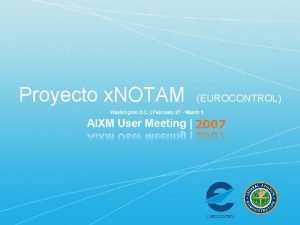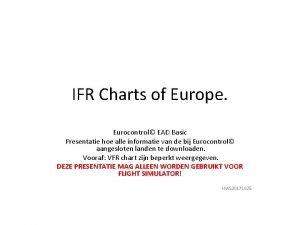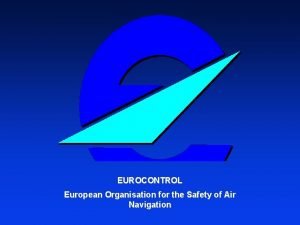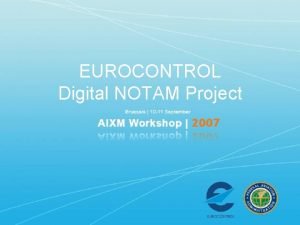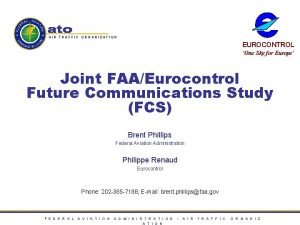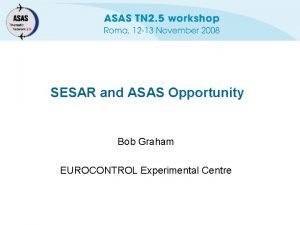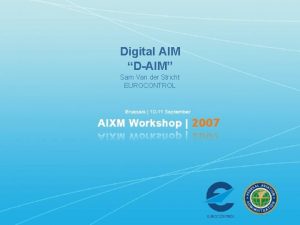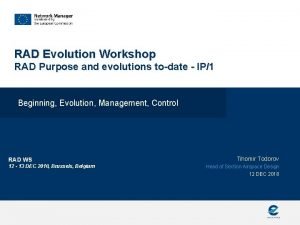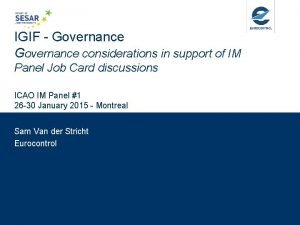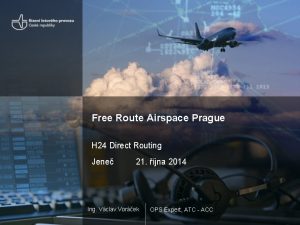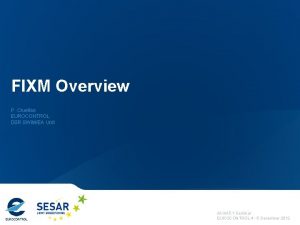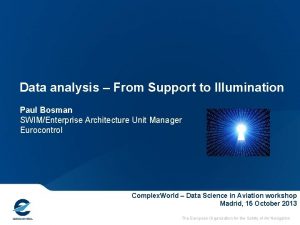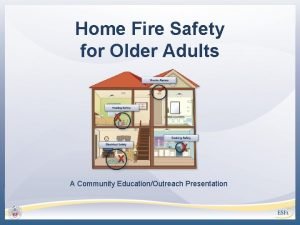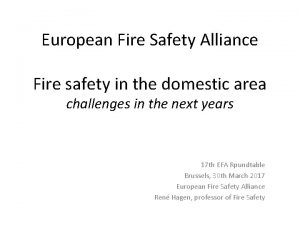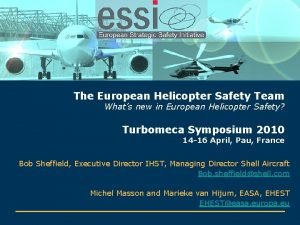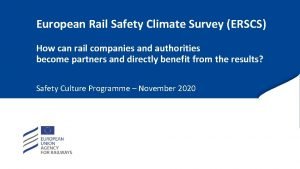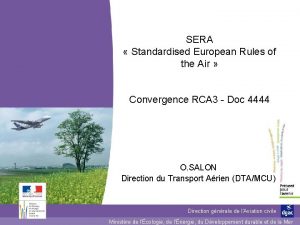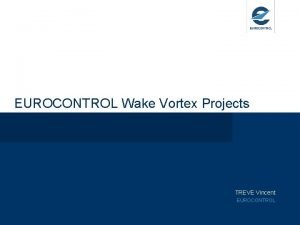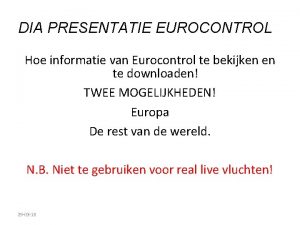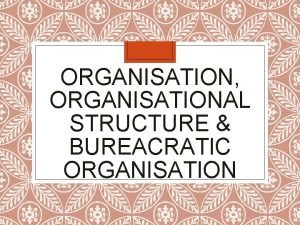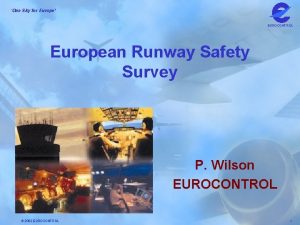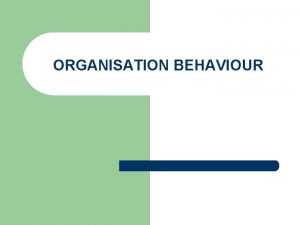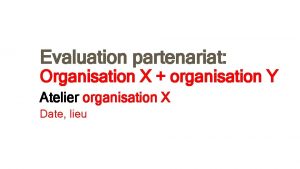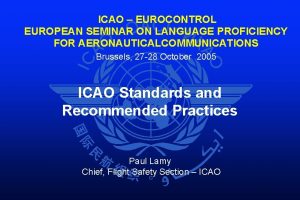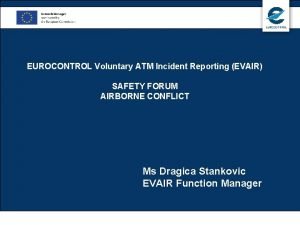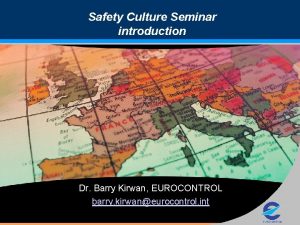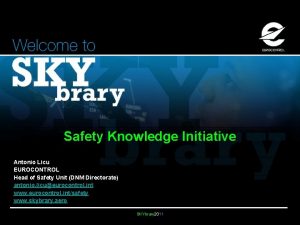EUROCONTROL European Organisation for the Safety of Air


















![B 747 Approach Radar Vector to ILS Corrected net Thrust [lbs, all engines] Altitude B 747 Approach Radar Vector to ILS Corrected net Thrust [lbs, all engines] Altitude](https://slidetodoc.com/presentation_image/0cb3694b6d045c656dfc49814f3469c4/image-19.jpg)
![B 747 Approach CDAs with RNAV procedures Corrected net Thrust [lbs, all engines] Altitude B 747 Approach CDAs with RNAV procedures Corrected net Thrust [lbs, all engines] Altitude](https://slidetodoc.com/presentation_image/0cb3694b6d045c656dfc49814f3469c4/image-20.jpg)


- Slides: 22

EUROCONTROL European Organisation for the Safety of Air Navigation

Colloquium on Environmental Aspects of Aviation Montreal, Canada 9 - 11 April 2001 Integrating Environmental Issues into Air Traffic Management (ATM) Operations George Paulson Director Safety, Airspace, Airports & Information Services


The EUROCONTROL ATM 2000+ Strategy l Safety l Economics l Capacity l Environment l National security and defence requirements l Uniformity l Quality l Human factors

EUROCONTROL Environmental Policy and Strategy l Working within international framework l Joint commitment of EUROCONTROL States l Environmental considerations integral to ATM decision making l Objectives u minimum impact at and around airports u compliance with international standards and regulations u mitigate aviation noise and emissions

Reducing Emissions ATM has role to play Estimate for ECAC area Potential savings from CNS/ATM Additional potential fuel saving from CNS/ATM • 5% ICAO-CAEP WG/4, 2000 • 6 - 12% IPCC, 1999 • 7% EUROCONTROL study, 1997

EUROCONTROL Environmental Assessment Tools l Aircraft Performance Models l Advanced Emission Model (AEM) l European Harmonised Aircraft Noise Contour Modelling Environment (ENHANCE) l Simulation tools l Air traffic movement database 38 ECAC States u updated daily u

ATM - Delivering Environmental Benefits l Air Traffic Flow Management (ATFM) l European Route Network Developments l Flexible Use of Airspace (FUA) l Reduced Vertical Separation Minimum (RVSM) l Area Navigation (RNAV) l Continuous Descent Approaches (CDA)

Air Traffic Flow Management (ATFM) l l Balance demand with capacity l Protect ATC systems from overload Re-routings u avoid congested areas l Aircraft held at airports u engines shut down u avoid en-route and approach holding u avoid taxi queuing

ATS Route Network Developments DIK RUWER CTL KRH TGO BRY EPL TRA RLP DIJ TRA HR DIJ HOC MOU WIL ZUE MOU KPT LUL ATN PAMOU FRI SPR SAPRI PAS LSA SRN KINES TDP KINES SRN TOVEL LARVI TOP DGN GEN NIZ MTG

ATS Route Network Developments l l European ATS Route Network developments u shorten average route lengths u increase capacity Example - Sweden u new route network 1998 u net flight distance annual reduction of 3, 2 million NM u annual flight time saving of 565, 000 hours

Flexible Use of Airspace (FUA) 4 Airspace available to all user groups 4 Security and Military needs satisfied 4 Shorter routings 4 More optimum flight profiles 4 Less fuel burn

Pre RVSM 24 Jan 02 FL 430 2000 ft FL 410 FL 400 FL 390 FL 380 FL 370 1000 ft FL 370 FL 360 FL 350 FL 340 FL 330 FL 320 2000 ft FL 310 FL 300 FL 290 FL 280 1000 ft FL 280

Reduced Vertical Separation Minimum (RVSM) on 24 January 2002 l 6 additional flight levels l Increase in airspace capacity l More optimum flight profiles u l reduction in fuel carriage and fuel burn Principal benefits u reduced delays u 200, 000 tonnes fuel saved annually

Area Navigation (RNAV) Procedures l Improved flight management more consistent track-keeping – concentration of tracks u shorter direct routes – increased fuel efficiency u highly flexible – avoid noise sensitive areas u l Key to continuous descent approaches u consistent u repeatable

Use of Conventional STARs Conventional RNAV procedures Source: Courtesy DFS

RNAV trial Nice Airport l RNAV - avoiding noise sensitive areas l Trial RNAV procedure l Co-operation between l u DGAC France u EUROCONTROL u European Space Agency GNSS technology

Continuous Descent Approaches (CDA) l Concept description lower power settings u from higher altitude u no level-off segment u CDA Conventional approach
![B 747 Approach Radar Vector to ILS Corrected net Thrust lbs all engines Altitude B 747 Approach Radar Vector to ILS Corrected net Thrust [lbs, all engines] Altitude](https://slidetodoc.com/presentation_image/0cb3694b6d045c656dfc49814f3469c4/image-19.jpg)
B 747 Approach Radar Vector to ILS Corrected net Thrust [lbs, all engines] Altitude [ft] 8000 7000 6000 4000 5000 4000 2000 0 3000 2000 1000 -2000 0 -5 0 5 10 15 20 25 30 Track distance [km] Altitude profile Thrust profile Study performed by NLR (Sourdine project) 35 40 45 50 55 60
![B 747 Approach CDAs with RNAV procedures Corrected net Thrust lbs all engines Altitude B 747 Approach CDAs with RNAV procedures Corrected net Thrust [lbs, all engines] Altitude](https://slidetodoc.com/presentation_image/0cb3694b6d045c656dfc49814f3469c4/image-20.jpg)
B 747 Approach CDAs with RNAV procedures Corrected net Thrust [lbs, all engines] Altitude [ft] 8000 7000 6000 4000 6000 5000 4000 2000 0 ~ 30% fuel saving Reduced noise impact 3000 2000 1000 -2000 0 -5 0 5 10 15 20 25 30 Track distance [km] Altitude profile Thrust profile Study performed by NLR (Sourdine project) 35 40 45 50 55 60

Noise Reduction Benefits using RNAV CDAs 10 65. 0 d. B(A): Decrease of 25 km² 5 -5 55. 0 d. B(A): Decrease of 24 km² 75. 0 d. B(A): Decrease of 0. 3 km² -10 0 5 10 15 20 X (km) 25 30 35 40 45 Y (km) 0

Summary l Environmental Policy and Strategy in place l Working to establish ATM environmental objectives l Integrating environmental considerations into ATM implementation programmes and operations l Delivering operational ATM environmental benefits l ATM contributing to sustainable aviation growth
 Hubungan air tanah dan tanaman
Hubungan air tanah dan tanaman Notam eurocontrol
Notam eurocontrol Ead basic
Ead basic Eurocontrol
Eurocontrol Notam eurocontrol
Notam eurocontrol Eurocontrol onesky
Eurocontrol onesky Eurocontrol experimental centre
Eurocontrol experimental centre Eurocontrol sam
Eurocontrol sam Rad
Rad Eurocontrol
Eurocontrol Free route airspace
Free route airspace Eurocontrol genova
Eurocontrol genova Paul bosman eurocontrol
Paul bosman eurocontrol European fire safety community
European fire safety community Alliance fire & safety
Alliance fire & safety European helicopter safety team
European helicopter safety team European rail safety climate survey
European rail safety climate survey Sera rules
Sera rules Iso 22301 utbildning
Iso 22301 utbildning Typiska novell drag
Typiska novell drag Nationell inriktning för artificiell intelligens
Nationell inriktning för artificiell intelligens Vad står k.r.å.k.a.n för
Vad står k.r.å.k.a.n för Shingelfrisyren
Shingelfrisyren

